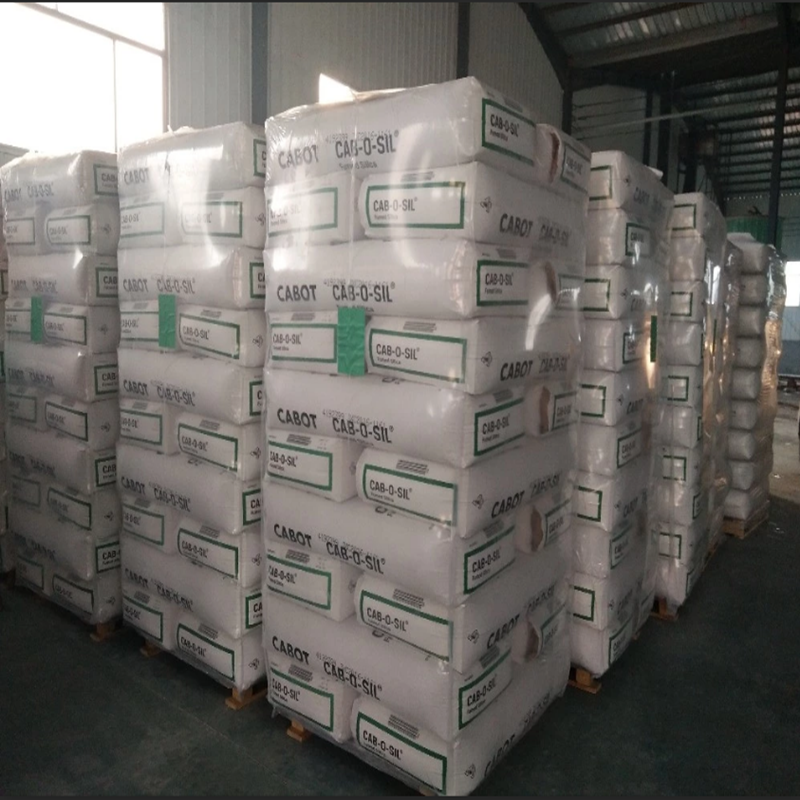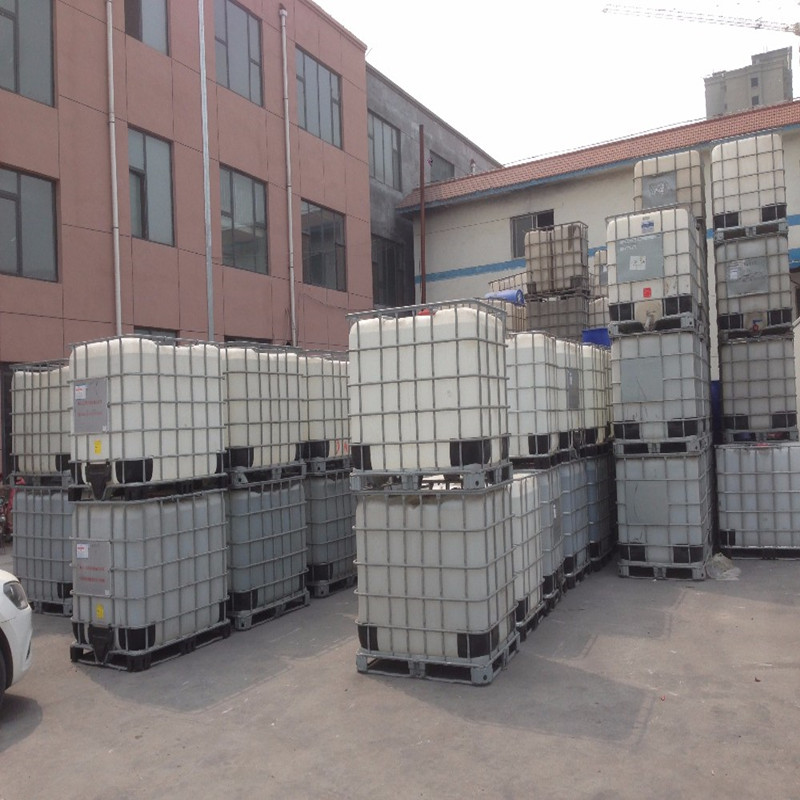Common problems and solutions of nano calcium carbonate in silicone sealant
2022-02-22 From: SINOHONOR INDUSTRY CO.,LTD Browsing times:136
Calcium carbonate occupies almost 70% of the annual inorganic powder usage. It is the most widely used powder filler in the plastics industry. It has become the first choice for the plastics processing industry due to its low price and excellent processing performance. s material. In addition to the plastics field, calcium carbonate is used more and more in silicone sealant.
Usually, a small amount of nano-calcium carbonate (CCR) is added during the preparation of silicone sealant to reinforce it and reduce the cost. In addition, it also keeps the glue good in appearance. However, the following issues need to be paid attention to during the application of nano-calcium carbonate:

1. The moisture content causes the powder to agglomerate
The higher the water content of calcium carbonate, the increase of hydroxyl (-OH) on the surface of the particles, and the aggregates show a tendency to agglomerate with each other. Under the action of the liquid phase polysilane, a three-dimensional network is formed, which increases the viscosity of the rubber compound. 1~3mm particles are formed in the medium, causing the mixing time to be prolonged.
Therefore, the calcium carbonate powder must be dried before use to control the moisture content below 0.8%.
2. The second agglomeration causes a larger particle size
Secondary agglomeration is generally easy to occur in nano-calcium carbonate products with smaller particle diameters. As the particle size range of nano-calcium carbonate is reduced to 40-60nm, the specific surface area of the particles increases (22-34m2/g), and the cohesion is enhanced. It is easy to form tightly bound hard masses, that is, porous secondary particles. During the kneading process of silicone rubber, it is difficult to disperse the secondary particles uniformly, and when the number of particles is large, particles are prone to appear on the surface of the product, and even the phenomenon of "pitted surface" or "matte surface". Therefore, it is necessary to disperse through one or more grindings, or to extend the kneading time.
3. Catalytic curing if PH value is too high
Too high a Ph value will reduce the storage stability of the silicone rubber. The higher the Ph, the faster the silicone rubber cures. Storage stability is a very important quality indicator of silicone rubber products. Theoretically, the PH value of calcium carbonate is weakly alkaline. Weak organic acid or organic acid salt can be used to coat it on the surface of calcium carbonate. Certain neutralizing effect, control its PH value below 9.5.
4. Insufficient or excessive surface treatment
When the surface treatment is insufficient, the surface of the calcium carbonate particles is a polar part, which is difficult to be compatible with the non-polar organics in the silicone rubber, causing difficulty in dispersion. It is difficult to "eat powder" during mixing and prolong the kneading time, even after fully mixing , Due to the lack of adequate organic surfactant coating on the surface of calcium carbonate, the probability of contact between the silicone rubber system and the polar calcium carbonate interface is significantly increased. There are more hydroxyl groups on the surface of calcium carbonate. These groups can interact with liquid silicone rubber molecules. The Si-O bond in the chain forms a hydrogen bond (physical adsorption), and the result will have two different effects: on the one hand, it will lead to the improvement of the physical and mechanical properties of the vulcanizate, on the other hand, it will also produce structuring in the system. As a result, the storage stability of the rubber compound decreases.
When the surface treatment agent is excessive, it will also have an adverse effect on the production of silicone rubber, which may result in a decrease in bonding performance and a decrease in the physical properties of the product.

Effect on bonding performance:
Because silicone adhesive is a kind of adhesive product, it is required to have good adhesive performance with the surface of the construction medium. In order to improve this adhesive performance, silane coupling agents are often used in silicone adhesive formulations to improve and strengthen. Adhesive performance is based on the formation of physical adsorption between the active groups in the silane coupling agent and the surface of the construction medium through van der Waals forces or hydrogen bonds, or the formation of chemical bonds through the reaction of the groups. When the calcium carbonate surface treatment agent is excessive, the number of organic groups increases significantly (especially the nano calcium carbonate products with organic hybrids as the main surface treatment agent are more obvious), and part of the groups in the silane coupling agent will interact with carbonic acid. The organic groups in the calcium surfactant molecules are bonded, thereby affecting the bonding performance to the construction interface
Impact on the physical properties of the product:
Excessive surface treatment agent reduces the probability of direct hydrogen bonding between the surface of calcium carbonate particles and the silicone glue system. It mainly depends on the combination of surfactant organic molecules and the system, because calcium carbonate surfactant molecules are mainly organic long-chain molecules. The binding force between these organic molecules is more flexible, so the modulus of the cured silicone rubber product is lower. If there is a proper part of the calcium carbonate surface that can hydrogen bond with the silicone rubber system, the network structure of the system Stronger, stronger cohesion. The tear strength of such products will be improved. In addition, the short-chain organics in the surface treatment agent are volatile. When the treatment is excessive, the volatile content of the product will increase, which will increase the low-boiling organics extracted during the vacuum kneading process of the silicone rubber.
5. Affect the storage stability of dealcoholized rubber
This problem has occurred in some silicone rubber companies, which has caused great confusion to nano-calcium carbonate and silicone rubber companies. Due to the production process and product characteristics of silicone rubber products, the finished products made by adding cross-linking agent to silicone rubber products must be sealed and stored. Once the quality problems of the finished products occur, it is difficult to rework the finished products, resulting in greater losses.
According to relevant data, dealcoholized silicone rubbers generally use highly hydrolyzed active silane coupling agents. Without the introduction of hydroxyl groups and moisture scavengers, the trace moisture in calcium carbonate and the silane coupling agent can easily react to form free alcohols. This causes the storage stability and vulcanization performance of the system to decrease. In particular, products with insufficient surface treatment absorb moisture very quickly during storage, and the moisture of the nano-calcium carbonate secondary particles is difficult to remove. Therefore, it is reasonable to believe that the surface of calcium carbonate particles under this condition has more moisture and hydroxyl groups. A local microscopic network structure with calcium carbonate as the node is formed. In severe cases, local microstructure will appear, stress concentration will occur, and more uniformly distributed fine “particles” (actual shrinkage or protrusions) will be formed. Another peculiar phenomenon of this kind of "particles" is that when the temperature of the system rises, it will gradually disappear, which can be explained as: as the temperature of the system rises, the thermal movement of molecules intensifies, which destroys the microscopic cross-linking and bonding, and the local stress is weakened. Or disappear, so the surface and internal molecular structure of the silicone rubber return to the normal state, and the temporary "particles" disappear. When the temperature of the system decreases, the "particles" reappear in their original positions.




